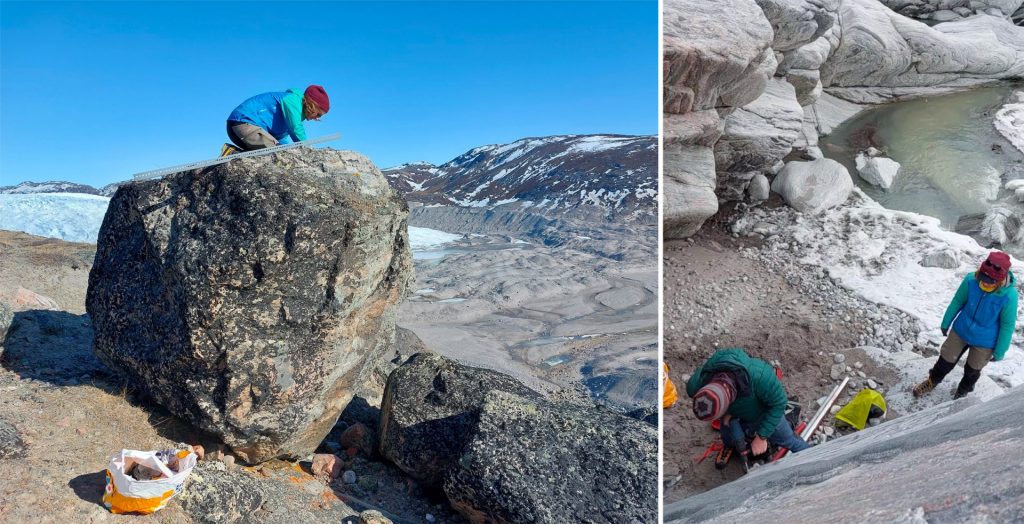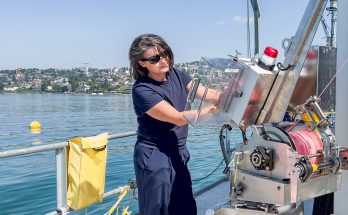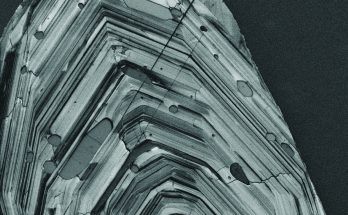Cette publication est également disponible en :
![]() Français
Français
Researchers from the UNIL went to Greenland to study the changes in erosion of the ice sheet, and the discharge of glacial sediments into ecosystems. Poorly understood, increased melt and evolving glacier dynamics caused by climate change may result in consequential changes to landscapes. This study aims to understand erosion and sediment transport from the Greenland Ice sheet and to predict the evolution of these systems.
Dr Ian Delaney, Ambizione fellow at the Institute of Earth Surface Dynamics, and Marjolein Gevers, PhD student, both at the Faculty of Geoscience and Environment are back from the field. As climate warms and affects earth surface dynamics, they are tracking the changes in glacier erosion and sediment discharge from the Greenland Ice Sheet.
Over the last 50 years, melt is accelerating and the ice sheet is changing. What are the consequences on the landscape? Can we see any evidence of these changes? How can we monitor these phenomena and predict their evolution?
By collecting sediment cores in fjords and gauging rivers in Greenland, Ian Delaney and his collaborators aim to track the recent changes in the ice sheet erosion and sediment discharge. The sediments in the ocean floor are the memory of the last centuries. Their layers contain records of the influx of sediment from the ice sheet into the sea. Findings from these precious data will also feed models to evaluate the evolution in sediment discharge as climate warms.
Seven meters of ice released into the oceans
The sliding and melting of glaciers drive sediment transport into ecosystems. Sliding glaciers scrape and erode the bedrock, while subglacial rivers carry these sediments away.
In mountainous regions such as Switzerland, changes of sediment flow from glaciers can impact their delivery into river systems. Hydropower is also affected by sediment transport. High sediment supply leads to the filling of hydroelectric reservoirs and can lead to increased wear of hydroelectric infrastructure by hydro-abrasion.
In Greenland, the changes of sediment flux are on a much larger scale. Seven meters of ice sheet is rising above sea level and could be released into the world’s oceans in the next millennium. Mass loss from the ice sheet over the next century will likely be greater than those over the last 12,000 years.
The dramatic changes to the ice sheet not only affect the global sea level, but also change their erosive capacity and the discharge of sediment, which impacts many earth systems. For instance, these changes affect the supply in nutrients to the environment, but also in diverse chemical elements that can favour or hinder biological growth.
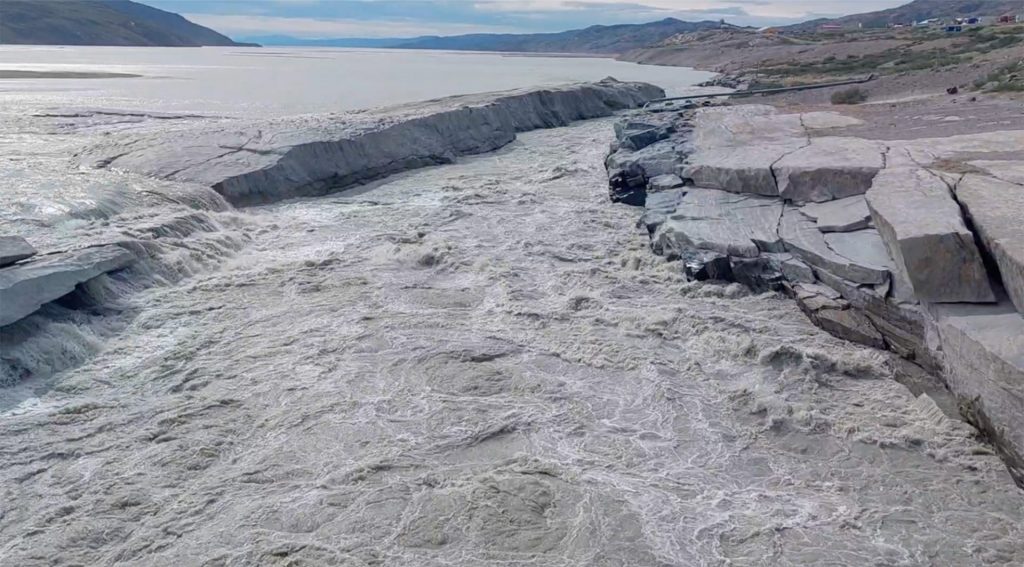
Greenland: a challenging field work
In Greenland, Ian Delaney’s team is not alone, the current changes at the Ice Sheet attract scientists from all over the world. In addition to working with local boat operators, field duties are shared with several Swiss and international collaborators. Irina Overeem and Ethan Pierce from the University of Colorado, Paul Liu from North Carolina State University, Brandee Carlson and Julia Wellner from the University of Houston, Andreas Vieli from the University of Zurich, each working in different and complementary fields such as coastal and fluvial geomorphology, sedimentology, ice sheet history, glaciology and geomorphodynamics.
For Marjolein Gevers, communicating with all team members is essential to ensure that everyone has the same goal and is correctly assessing the situation and potential danger in the same way. “It is important to keep talking about how you feel with the situation on the field and when you feel uncomfortable.” Crossing a river, or simply making sure you don’t fall out of the boat, are daily challenges in which require focus and awareness, especially when you’re tired.
But the bigger challenge for UNIL researchers now is to put together the “patchy” observations sampled in the field to build the big picture. Ian Delaney aims to bring together observations from the sediment cores to calibrate a numerical model on glacier dynamics. The idea is to identify processes and try to evaluate how these processes will evolve in a warming climate. This will help them to evaluate potential changes to glacier erosion in the next century, according to future climate scenarios.
About 8% of sediment influx to the world’s oceans comes from the Greenland Ice Sheet. The discharge of sediment in Arctic affects the input of nutrients in the world’s oceans. Given the quantities of sediment, any change will have impacts.
Ian Delaney
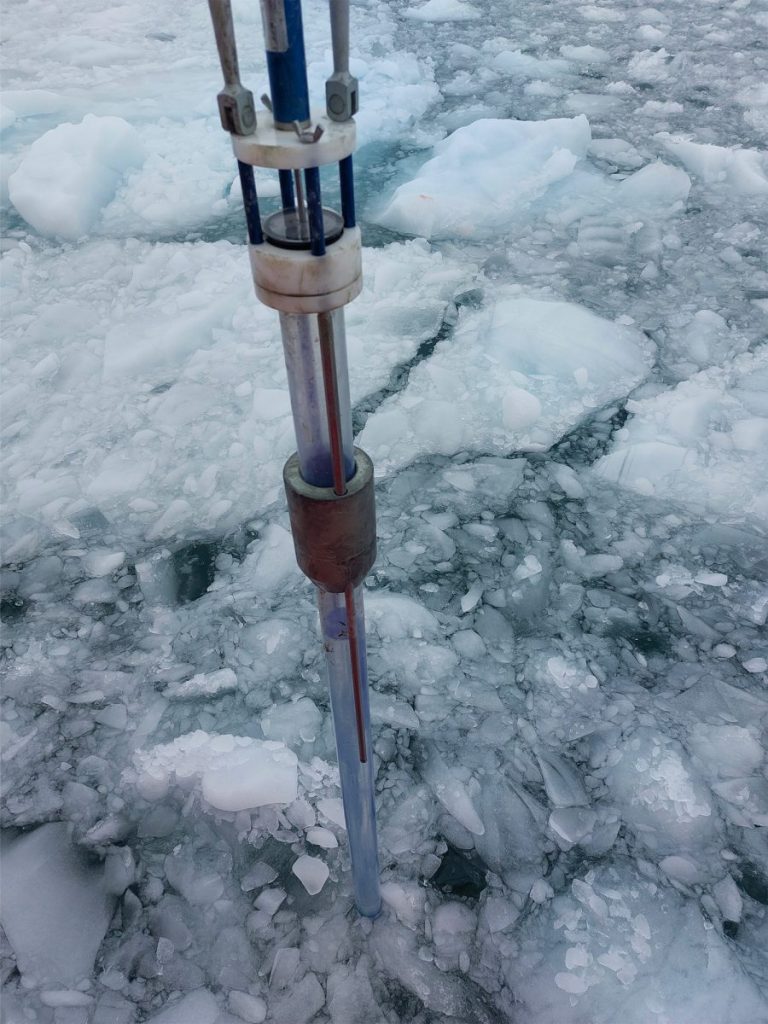
A pressing matter: what happens when glacier retreat?
By tracking changes and evolution of sediment discharge from Greenland ice sheet, the team hopes to understand how the system responds to increasing glacier melt and changing glacier dynamics. “Greenland is a unique place: changes occurring there are massive and have a global impact, but are still poorly understood,” comments Ian Delaney. “Through our research, we hope to establish models that will help us understand and predict these phenomena, so we can anticipate them.”
When glacier melt, what is left over, what are the side effects?
Ian Delaney
